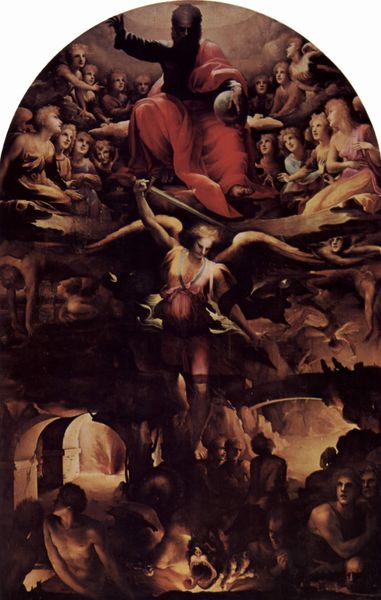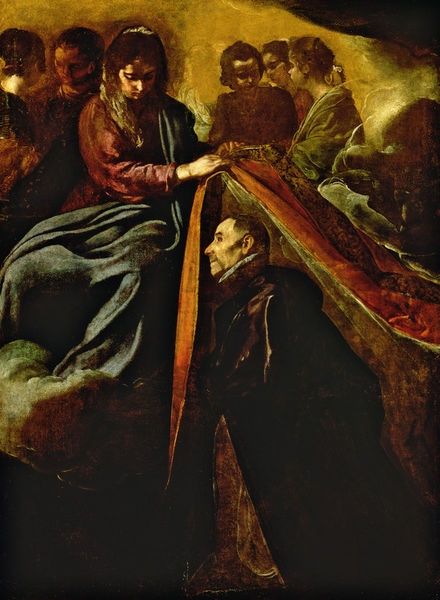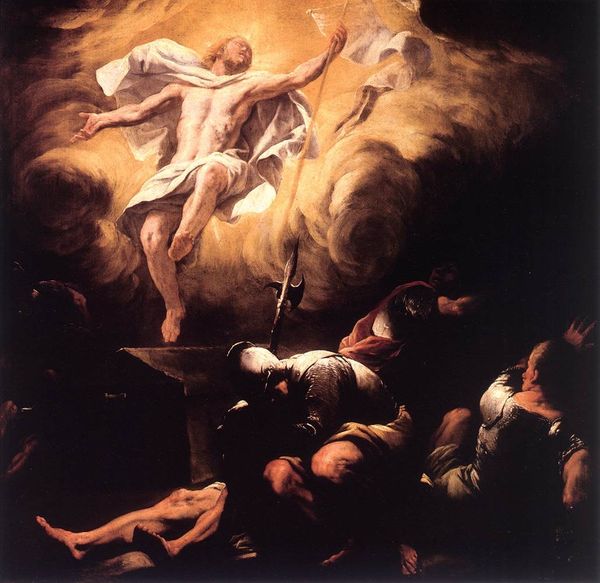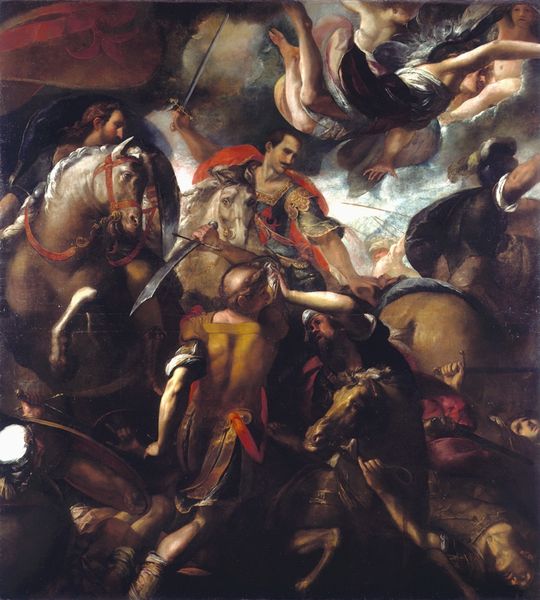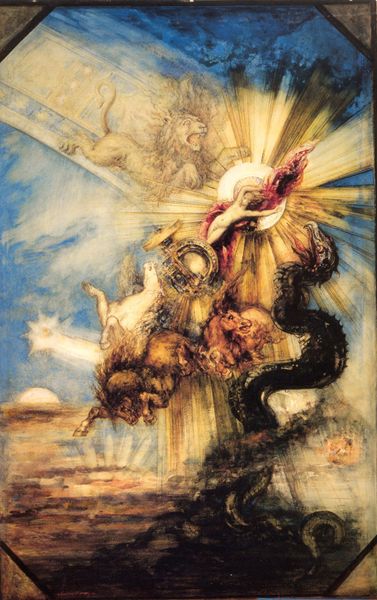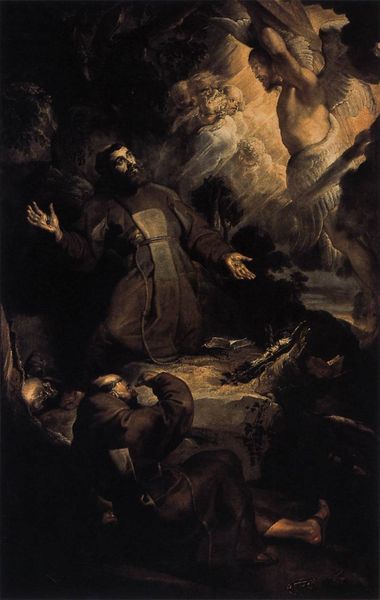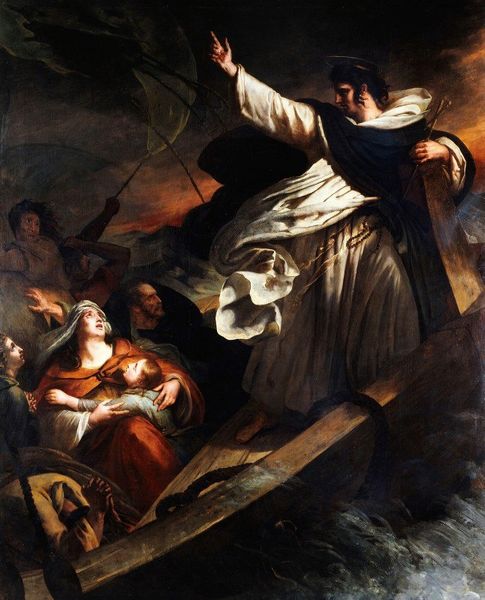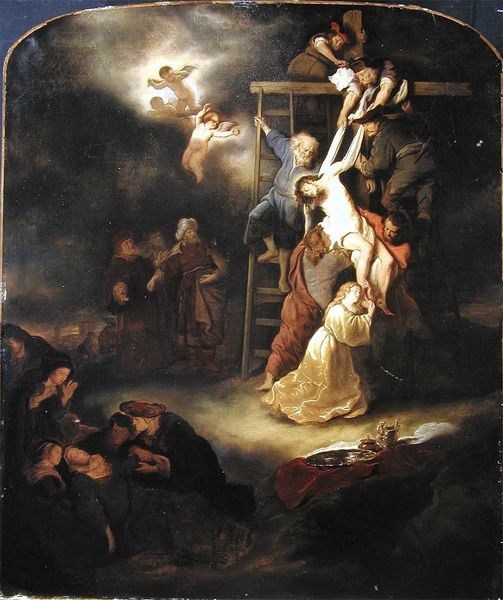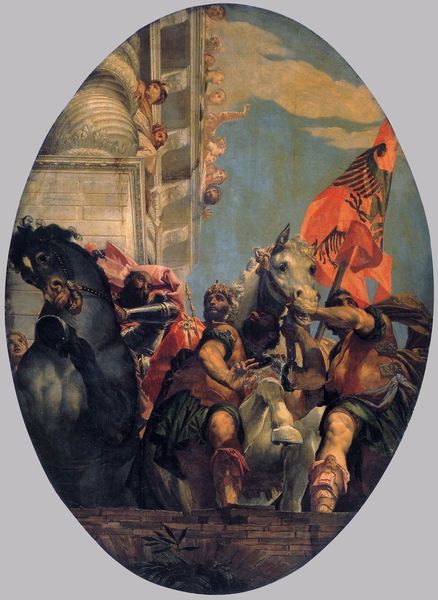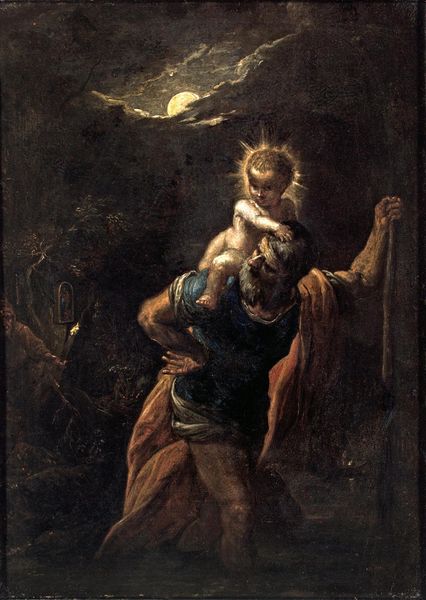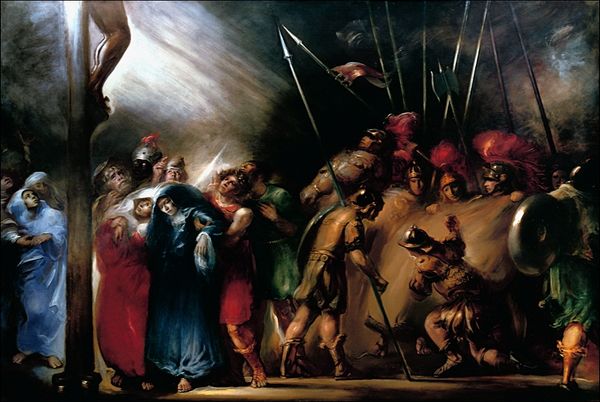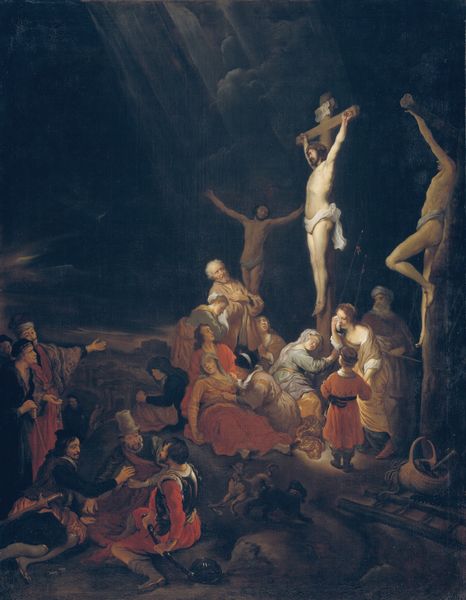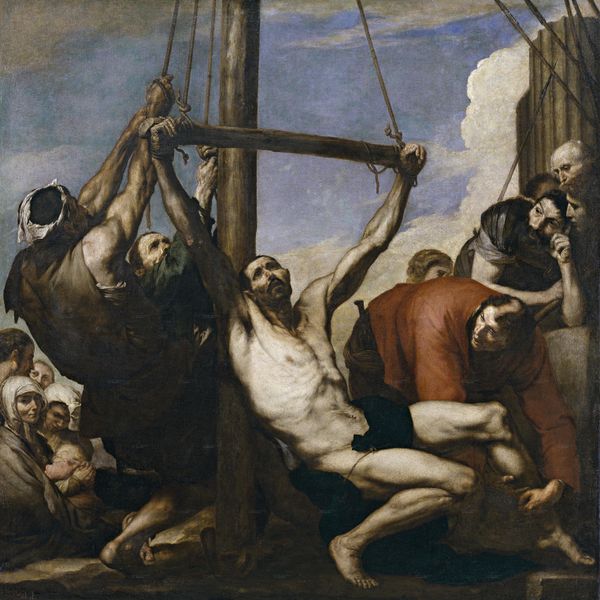
painting, oil-paint
#
narrative-art
#
painting
#
oil-paint
#
landscape
#
figuration
Copyright: Frank Mason,Fair Use
Curator: Looking at this artwork, “Storm at Sea (St.Anthony),” painted by Frank Mason in 1964, one immediately senses the turmoil—both in the environment and within the figures. Editor: It's very theatrical. I see dark hues crashing into stark whites, creating an intense dramatic effect. The high contrast suggests an emotional, perhaps even spiritual crisis, unfolding before us. Curator: Indeed. Mason trained at the Art Students League in New York and clearly absorbed lessons in traditional academic painting. Considering that timeframe, and the influence of narrative-based religious works on Mason's practice, this scene seems heavily influenced by maritime dramas, very common as themes for public consumption at the time. Editor: Note how the artist employs oil paint. It appears the layering creates a sense of depth and movement that mimics the ocean's chaotic motion. There's an emphasis on brushstroke texture, furthering that atmospheric unease. Do you think the figures, who appear as almost archetypes here, are also critical? Curator: They absolutely are. The labor that would have gone into seafaring during this period. The types of garments worn and the various people and cultures that would have passed through these ships are vital to consider the conditions they were operating under at sea. These themes directly reflect the traditional use of laborers while working the oceans as a resource during these formative periods of discovery and religious proselytization. Editor: The dynamic composition pulls your eye around the canvas, making the viewer an active participant in the storm. And those subtle color shifts in the dark areas—the blues and browns hinting at the overwhelming scale of the ocean, almost swallows the ship. Curator: I find myself thinking about the sheer number of painters working in that figurative style, creating devotional images. When we focus on labor, that artisan labor matters: Who made this painting, and how did his work differ or not differ from those hundreds, maybe thousands, who produced similar pieces? Editor: I come away struck by its evocative use of light and shadow—purely formal considerations, of course! The light serves not only to illuminate but also to intensify the spiritual weight of the scene. Curator: So while I was mulling over the artist's social conditions and painting traditions of the time, you honed in on a deeper read of form— interesting to me, what it takes to truly build and construct something of cultural and physical significance!
Comments
No comments
Be the first to comment and join the conversation on the ultimate creative platform.
